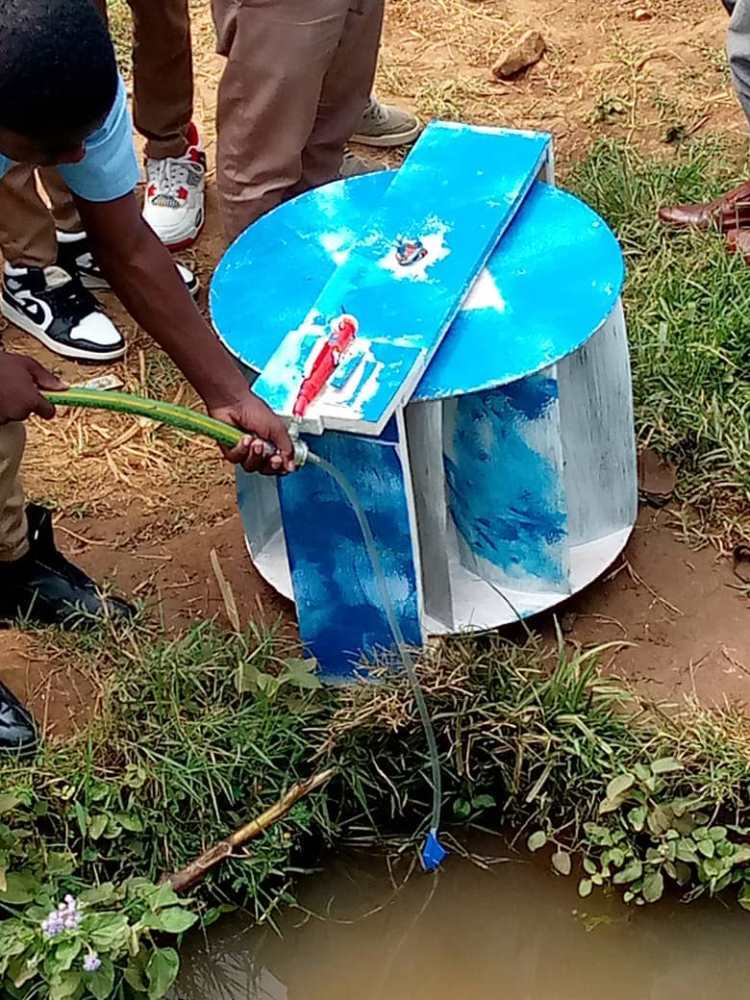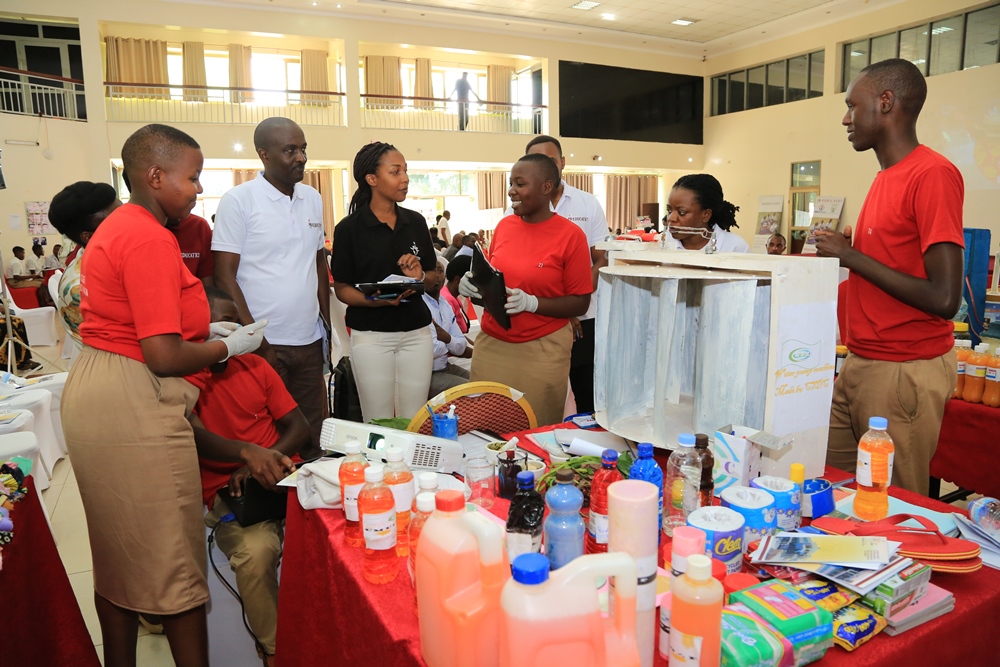Students from ADEC Ruhanga College have invented a way to use wind-powered irrigation machine capable of watering crops in hilly areas, which could be a solution for farmers struggling with irrigation in the absence of flat land.
Irrigation projects are often considered in flat areas and are usually done on a large scale compared to the land needed for irrigation.
In the Eastern province, these projects are widespread because the area is often affected by drought that severely damages crops.
Students from ADEC Ruhanga College, located in Ngororero district in the Western Province, have developed a wind-powered irrigation machine using their STEM education knowledge.

The machine consists of four parts, including a part shaped like a windmill that rotates when hit by wind.
There is also a pump that draws water from a well, and pipes that are supposed to take water from where it is to where it will rise, then there is another device called a ‘valve’ that can close or open during irrigation.
Herve Mihigo, one of the students who made this wind-powered machine, told us that based on their STEM education, they found that wind is an inexhaustible power source that they could harness to increase productivity and solve the problem of irrigation.
He says, “It was challenging to draw water from the well to irrigate up the hill, so we thought, the wind is always there and it has always been, let’s make a machine that will be rotating powered by the wind, the wind will lift the water we have drawn from the well and take it to the hill for people to irrigate their crops.”

The machine these students started with, first irrigated a small garden, but then they made five others that are used to irrigate vegetables grown in the school, including other diverse crops.
He says, “We have made six machines that are used to irrigate a small garden and another one that irrigates a farm of 50 by 40 meters. It is stronger than the others, because the more wind there is, the more the machine is able to draw a lot of water, whether it is small it draws little water.”
These students say that the machines they made are related to the equipment they can afford, showing that they have the goal of continuing to work in such a way that people living in hilly areas can also see how to irrigate without difficulty.

Samuel Ngirabakunzi, a teacher at ADEC Ruhanga, said that the machines these students make can irrigate many places during a period of strong wind, and pipes can be installed that can carry water to far places.
He adds that they are thinking of how to increase power in the devices they make, so that it draws a lot of water, and when the wind is low, there is a way a person can have a place to store energy to work at the desired level.
As the economy’s transformation agenda was being unveiled on June 5, 2023, the Minister of Agriculture and Animal Resources Dr Ildephonse Musafiri showed that there is a need to increase energy in irrigation activities without using electricity, which is linked to dealing with the effects of climate change.
He said, “In order for us to continue to see good yield we need to irrigate, in Rwanda, we need to irrigate more than 500,000 hectares of cultivated land, and the cultivated land is 1.4 million hectares. We need to irrigate at least half of it. I wish that irrigation would move from small scale to large scale.”
Minister Dr. Musafiri says that this method of irrigating on settled land would be good as long as it does not harm the environment.
A new report on water catchment and storage in Rwanda shows that there are three ways of storing water used in various ways including agriculture.
These include surface water used in large-scale irrigation, reservoirs, dams, and turbines used in generating electricity.
The report showed that currently, Rwanda has 1414 surface water sources capable of storing 131.603 cubic meters, 77 turbine sites capable of storing eight million cubic meters, and 50 dams capable of storing 75 million cubic meters.


